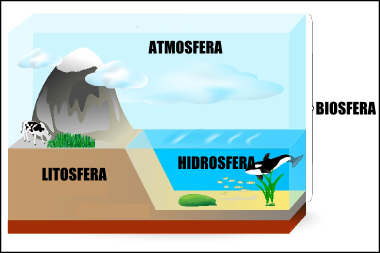THE biosphere it's the place where life happens. It represents the layer of Earth that is inhabited by living things. For there to be life on planet Earth, it is very important to have light and heat from the Sun and water in liquid form. These elements are essential for the maintenance of life on our planet, as all beings that live here need them.

Light and heat from the Sun and water are essential for life to occur on Earth
anywhere in the biosphere there is a life cycle that commands all living beings that are part of it. This cycle consists of the birth, development, multiplication, death and decomposition of all animals, plants and microorganisms that are in the biosphere.
THE biosphere it is formed by several ecosystems, which are constituted by biotic (plants, animals, microorganisms) and abiotic (water, light, soil, ice, wind) factors. There are two types of ecosystems: terrestrial and aquatic.

There are two types of ecosystems: terrestrial and aquatic
Living beings are distributed throughout ecosystems according to their climate, as this greatly interferes in the amount and variety of food and water supply.
In the polar regions, where water forms thick layers of ice year-round, and the climate is very cold, so few species of living beings manage to survive.
In tropical regions, where the climate is warmer and more humid, and the supply of water and food is much greater, we find an immense variety and abundance of plants and animals. The largest forests in the world, including the Amazon rainforest, are found in these regions.
Between these two regions, we have another that we call the temperate region. In these regions it snows in winter, and there are forests with various types of animals and trees.

In the illustrations we can see polar regions, tropical regions and temperate regions
The amount of solar energy and water greatly affects the type of climate in a given region. Because of the Earth's position, and the movements it makes, the Sun heats regions in different ways, providing distinct climatic zones in different regions of the planet.

Due to the Earth's position and its movements, the sun's heat heats the terrestrial globe in a different way.
Paula Louredo
Graduated in Biology

